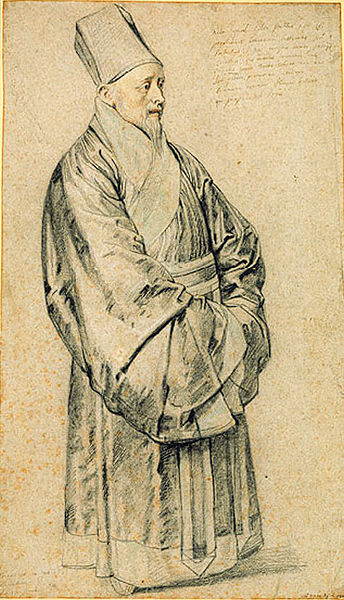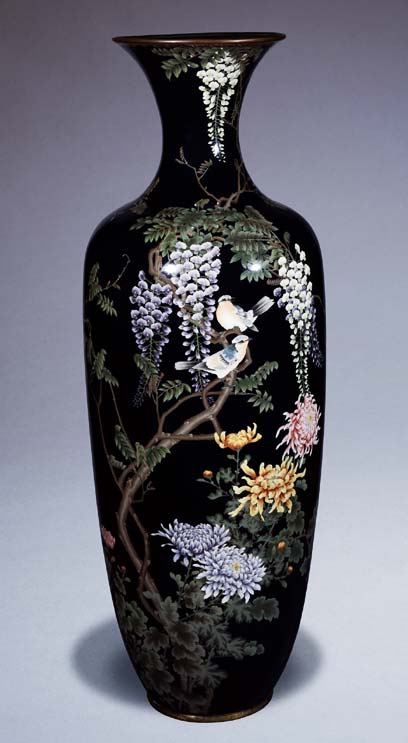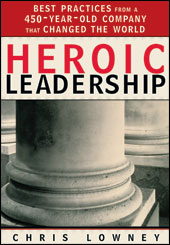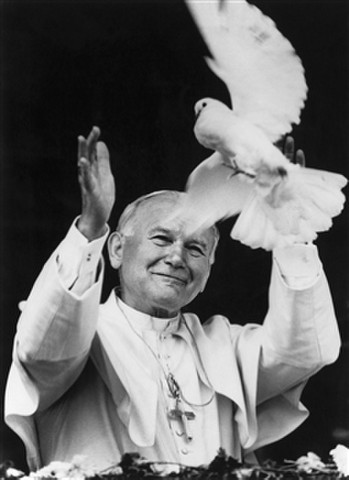Wisdom Story 53
by Anthony de Mello, S.J.

Buddha was once threatened with death by a bandit called Angulimal.
“Then be good enough to fulfill my dying wish,” said Buddha. “Cut off the branch of that tree.” One slash of the sword, and it was done! “What now?” asked the bandit.
Put it back again,” said Buddha. The bandit laughed. “You must be crazy to think anyone can do that.”
“On the contrary, it is you who are crazy to think that you are mighty because you can wound and destroy. That is the task of children. The mighty know how to create and heal.”
In the Hands of God
More than ever I find myself in the hands of God.
This is what I have wanted all my life from my youth.
But now there is a difference;
the initiative is entirely with God.
It is indeed a profound spiritual experience
to know and feel myself so totally in God’s hands.
Pedro Arrupe composed this prayer after he suffered a debilitating stroke, the effects of which he patiently endured for the final ten years of his life.
Excerpt from Hearts on Fire: Praying with Jesuits, edited by Michael Harter, SJ.
Jesuits seeking global cooperation: Water for All

Asian Water Development Outlook 2013, ADB & Asia-Pacific Water Forum
Mariel de Jesus and Pedro Walpole
We live in a world that is increasingly concerned with issues of security. These may be issues of national security, community, family or personal security. Resource security is also a concern, especially since the world’s population is dependent on natural resources – land, forests, and water – the exploitation of which has reached all known boundaries. The rate and volume of extraction are unprecedented and, along with environmental changes on-site and impacts downstream, threaten the natural and human ecology. Many sectors are competing for access and this competition sustains human poverty and degrades the ecology, increasing the need for proper management. Greater governance and cooperation is needed to address the world’s many resource challenges.
Today, much of the focus is on water. Today, 1.2 billion people, about one-fifth of the entire world, live in areas of physical water scarcity. Projections say that by 2025, almost 1.8 billion people will be living in regions of absolute water scarcity.
Approximately 1.6 billion face economic water shortage, meaning they will not have enough money for infrastructure. The main driver of today’s water challenge is economic growth and development. At present, the global requirement for water is 4,500 billion cubic meters of water per day. This demand is expected to grow to 6.9 billion cubic meters of water, exceeding current, accessible water supply by 40%. Water, or rather the lack of it, will also be a constraint to growth; at present, agriculture uses about 70% of annual global freshwater. But government, industry, and households will also require water: 65% more freshwater withdrawals will be required to support the growth of national economies.
Though issues of environment and natural resources have been on the discussion table for years, today, that conversation is reaching a wider audience and a new level of attention. This may be due in part to global business identifying water as a core resource in the sustainability of any business venture. Even if the water is not utilized in the production aspect directly, horizontal or vertical development and auxiliary services will meet questions of water sustainability. Like land, capital, and labor, water is not at the core of production and is a risk. Business has recognized that water is increasingly the limiting factor to the sustainability of many operations. Given the backdrop of climate change, the pressure is on business to find ways not simply to compete in a water-stressed world but to cooperate and contribute to a greater sustainability and access to water for all.
Although stated in different ways by different speakers, this was the constant refrain and reminder during the Asia Water Week 2013 conference: Securing water for all in Manila, Philippines last 11 to15 March and hosted by the Asian Development Bank. While there are potential solutions available to deal with the world’s water problems, thus far, the motivation to act at the scale and level needed is not present. The active presence of the private sector during the Asia Water Week conference may bring the necessary urgency and motivation to act on the issue.
Business must go beyond securing its access to water resources. It must contribute to a sustainable hydrological cycle in the ecosystems it affects and it must participate in the agenda of broader security of water for all to ensure its long-term viability. Business must also ensure that in the process of ensuring its own sustainability, it adds to the world’s sustainability and does not take from others unjustly. If people are concerned only about their own water source, managing and securing their own supply, that is not sustainability, it is self-preservation.
Business is called to work with affected communities, with government, with broader civil society, to address its needs without compromising the global ecology. The private sector will need to develop socialized water access in future developments if they are to be considered as genuinely greening the economy. All stakeholders must be involved in working towards a common goal: water security.
The global community must recognize its interdependence when it comes to issues of water: the world’s population is growing and water resources are finite and vulnerable. The United Nations declared 2013 as the International Year of Water Cooperation, and identified several opportunities for working together to ensure sustainable water use.
Water is critical to all life. We are all affected by the issues of water scarcity and must therefore participate in finding solutions. The world’s water future can only be secured through cooperation and collaboration of all.
Francis: The Saint and the Pope
Pope Francis receives Jesuit Superior General
Jesuit Superior General Fr. Adolfo Nicolas was received by Pope Francis on Tuesday evening at St. Martha’s Residence in Vatican City, where he is temporarily staying, until renovation of his apartment in the Apostolic Palace is complete.
Fr. Nicolas said on the personal invitation of Pope Francis, he went at the appointed time to St. Martha’s Residence, where the Pope received him warmly at the entrance”. He added that on the request of the Pope, photos were also taken.
Fr.Nicolas said he expressed his excuses for not knowing the protocol of addressing a pontiff, and was told by Pope Francis not to worry and to address him as he would another Jesuit and forget about titles like “Your Holiness” or Holy Father.
The Jesuit Superior General said “I offered the services of the Society of Jesus to Pope Francis and also extended an invitation to visit the Curia and have lunch with the Jesuits, for which Pope expressed gratitude and accepted the invitation.”
Fr. Nicolas said there was full unity of spirit on several topics they discussed during their meeting and he is convinced that they will work very well together in the service of the Church.
Fr. Nicolas said at the end of their encounter, Pope Francis helped him put on his coat, embraced him and saw him to the door. “I left St. Martha Residence with the belief that it will be worth to cooperate fully with him in the Lord’s vineyard” the Jesuit Superior added.
Un unknown portrait of Jesuit missionary Nicolas Trigault

TEFAF (The European Fine Art Fair), first held in 1975 in Maastricht, The Netherlands, is regarded as the world’s leading art fair. From the very beginning I have been visiting it, especially keeping an eye on works of art that have a connection with the history of the Jesuits. This year I discovered among other beautiful pieces so-called Jesuit porcelain from China with religious imagery on it, a Japanese Nambam lectern with the IHS-logo, and a painting of the Trinity by the Antwerp artist Artus Wolffort (1581-1641), from the Jesuit church of Saint Peter in Münster. The most surprising work of art was an unknown portrait of the Jesuit missionary Nicolas Trigault (1577-1628) in traditional Chinese costume, painted in 1617 when he was 40 years old. The portrait, oil on copper, 10.8 x 20.5 cms., from a private collection in the Czech Republic, is for sale at Rafael Valls Ltd. in London.
Trigault was born in Douai and became a Jesuit in 1594. He left Europe to do missionary work in Asia, arriving in Nanjing in 1611 and later moving to Hangzhou, where he was one of the first missionaries to work in the city. In 1612 he was appointed as the China mission’s procurator in Europe. In 1613 he sailed from Macau to Rome, and from there travelled around in Europe to raise money and publicize the work of the Jesuit missions. Peter Paul Rubens did a portrait of Trigault when the latter stopped in Antwerp in 1617. The portrait at the TEFAF is a, somewhat simplified, mirror image of this painting, now in the Musée de la Chartreuse in Douai.
From March 5 to June 9 there is an exhibition at the J. Paul Getty Museum in Los Angeles, under the title Looking East: Rubens’s Encounter with Asia. A drawing of Trigault by Rubens from the Metropolitan Museum in New York can be seen there.
Go in Peace, A Gift of Enduring Love
Pope John Paul II:

What we need to foster, in ourselves and in others, is a contemplative outlook. Such an outlook arises from faith in the God of life, who has created every individual as a wonder. It is the outlook of those who see life in its deeper meaning, who grasp its utter gratuitousness, its beauty, and its invitation to freedom and responsibility. It is the outlook of those who do not presume to take possession of reality, but instead accept it as a gift, discovering in all things the reflection of the Creator and seeing in every person their own living image.
Prayer not only opens us up to a meeting with the Most High, but also disposes us to a meeting with our neighbors, helping us to establish with everyone-without discrimination-relationships of respect, understanding, esteem, and love. Prayer is the bond that most effectively unites us all. It is through prayer that believers meet one another at a level where inequalities, misunderstandings, bitterness, and hostility are overcome; namely, before God. Prayer is the authentic expression of a right relationship with God and with others.
We need to reaffirm our need for intense, humble, confident, and persevering prayer, if the world is finally to become a dwelling place of peace.
So, to take time to pray and to nourish prayer and activities through biblical, theological, and doctrinal study; and to live by Christ and His grace by receiving assiduously the sacraments of reconciliation and the Eucharist: such are the fundamental requirements of every deeply Christian life. Thus, the Holy Spirit will be the source both of our action and of our contemplation, which will then interpenetrate each other, support each other, and yield abundant fruit.
This deep unity between prayer and action is at the basis of all spiritual renewal. It is at the basis of the great enterprises of evangelization and construction of the world according to God’s plan.
This reflection is from Pope John Paul II. These are selections from his book, Go In Peace: A Gift of Enduring Love.
Wisdom Story 52
by Anthony de Mello, S.J.

There was an old Zen master called Nonoko who lived alone in a hut at the foot of a mountain. One night while Nonoko was sitting in meditation, a stranger broke into the hut and, brandishing a sword, demanded Nonoko’s money.
Nonoko did not interrupt his meditation while he addressed the man:
“All my money is in a bowl on the shelf up there. Take all you need, but leave me five yen. I have to pay my taxes next week.”
The stranger emptied the bowl of all the money it held and threw five yen back into it. He also helped himself to a precious vase he found on the shelf.
“Carry that vase with care,” said Nonoko. “It will crack easily.”
The stranger looked around the small barren room once more and was going to leave.
“You haven’t said thank you,” said Nonoko.
The man said thank you and left. The next day the whole village was in turmoil. Many people claimed they had been robbed. Someone noticed the vase missing from the shelf in Nonoko’s hut and asked if he, too, had been the victim of the burglar.
“Oh, no,” said Nonoko. “I gave the vase to a stranger, along with some money. He thanked me and left. He was a pleasant enough sort of fellow, but a bit careless with his sword!”
Jesuit Leadership Style
Heroic Leadership Chris Lowney
“Heroic Leadership is the book on Jesuit-inspired leadership today.”

Best Practices from a 450-Year-Old Company that Changed the World
ISBN 0-8294-1816-4
336 Pages
-Fr. Kevin O’Brien, S.J, vice president of mission and ministry at Georgetown University and author of The Ignatian Adventure
Best-selling author Chris Lowney, a Jesuit-seminarian-turned-investment-banker, breaks down the four guiding principles of Jesuit formation and how they foster dynamic, effective leadership and achieve longevity.
Lowney’s book provides readers with a deeper understanding of the Jesuit formation that helped shape Pope Francis, as well as how this training may influence our Holy Father’s leadership style.
Heroic Leadership includes:
- The history of the unique formula for molding leaders that have guided the Jesuits for more than 450 years
- An in-depth examination of the four key elements of Jesuit formation: self-awareness, ingenuity, love, and heroism
- Modern-day examples of how successful leaders in today’s culture are best served when these guiding principles are applied
Chris Lowney on Pope Francis’s Jesuit Leadership Style:
Reviews:
“Lowney’s examination of the principles of Jesuit leadership…makes for fascinating reading. Jesuits and lay alike will find much to celebrate and emulate.”
-Bradley M. Schaeffer, S.J., president, Jesuit Conference
“Heroic Leadership advances a leadership unafraid to put love at the center. This is a lively, witty book about profound matters.”
-James N. Loughran, S.J., president, Saint Peter’s College
“Lowney demonstrates how today’s organizations need to scrap the traditional and narrow vision of leadership and adopt the Jesuit model of ‘everyone is a leader.'”
-Durant “Andy” Hunter, president, U.S., Whitehead Mann
“I am confident that I would have been a far more effective leader if I had read Heroic Leadership years ago. Highly recommended!”
-Ron Burkard, former executive director, World Neighbors
“Lowney brings together extensive experience in international banking, a solid grasp of Jesuit spirituality and history, and a good acquaintance with recent leadership literature to produce a book that is at once challenging and compelling.”
-The Reverend Harold Ridley, S.J., president, Loyola College in Maryland
Film Reviews : Love Is All You Need
by Rev Dr Richard Leonard SJ

Starring: Pierce Brosnan, Trine Dyrholm, Paprika Steen, Molly Blixt Egelind, Sebastian Jessen, and Kim Bodnia. Directed by Susanne Bier. Rated M (Sex scene, nudity and coarse language). 111 min.
This Danish romantic comedy tells the story of two very different families brought together in Italy for a wedding.
Ida (Trine Dyrholm) arrives home from her final chemotherapy treatment for cancer, to find her husband, Lief ((Kim Bodnia), “in flagrante” with a co-worker from his firm’s accounts section. Distraught and heartbroken, she leaves immediately for Sorrento to attend the wedding of her daughter, Astrid (Molly Blixt Egelind) to Patrick (Sebastian Jessen). The wedding couple and their guests converge on a run-down, but still glorious Italian villa, where the happy couple will be married.
The groom-to-be’s father, Philip (Pierce Brosnan), who owns the villa, has always had a tense relationship with his son, Patrick; his in-laws are not entirely to his liking; and he is discontented with life generally. Widowed, he is crotchety, ill-tempered and sad, and blames everyone else for the loss of his beloved wife years before. When Lief turns up at the wedding with his hair-brained girl friend, Ida proceeds to give him a piece of her mind, and Philip notes her demonstrative outburst with interest. Things then start going wrong with the wedding couple, and Ida and Philip are forced together in the ensuing debacle. In doing so, romance blossoms between them.
There is a “Mamma Mia” element to this film, with no singing, but the result is a gentle movie that has moments of genuine sparkle. Trine Dyrholm is delightful as Ida, and Pierce Brosnan is characteristically suave and stylish. The comedy is enhanced by a very unlikeable sister-in-law, Benedikte (Paprika Steen), who has a snarly daughter she describes publicly to guests at the wedding as obese. Benedikte wants everyone, except herself, to feel as insecure as possible.
The wedding couple are not as well suited to each other as is generally assumed. In particular, Patrick has an obvious lack of enthusiasm for sex, which presents a looming problem for a supposedly heterosexual couple about to be married. The scripting of the film is sharp, though the one-liners give way to situational comedy that occasionally gets out of hand.
The film as a whole is a light piece with particularly good chemistry between the two main leads, and it is a good-hearted movie that treats the human condition perceptively and sensitively. No stranger to portraying human drama, Susanne Bier has all her characters exposing their vulnerabilities, and the drama draws a lot of its force from human foibles that are easy to recognise. A perfectly common fault, shared by most of the characters in the movie, is that they demonstrate the universal tendency to pretend everything is all right, when those around us know clearly it is not.
Patrick’s conflicts get a lot of play. He is a person who is unsure of his male identity, and this is exploited by Bier to examine the role relationships between men and women. The film demonstrates, however, that what really matters the most in life are the warmth, affection and loving interactions that need to exist among us all.
The film is not a particularly weighty one, but it is enjoyable, and it provides a fine exposure to some especially scenic parts of Italy. The plot-line of the film has good, unexpected twists; there is dramatic dialogue to keep one reliably involved; and the film has interesting comic moments. Excellent camera work, showing Sorrento and the Amalfi coastline at their best, completes an entertaining package.
Rev Dr Richard Leonard SJ is the Director of the Australian Catholic Office for Film and Broadcasting (ACOFB).Peter W. Sheehan is associate of the Australian Catholic Office of Film and Broadcasting.








